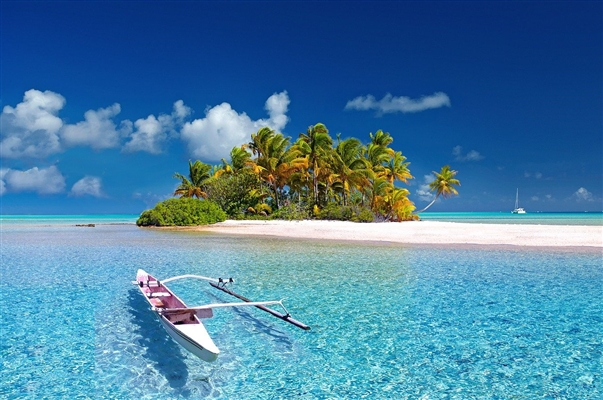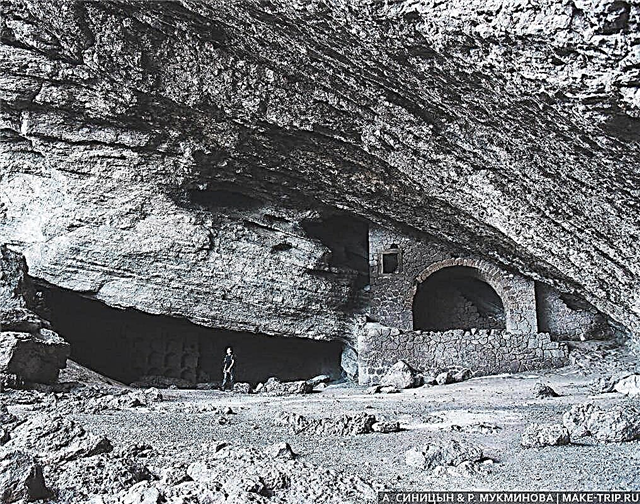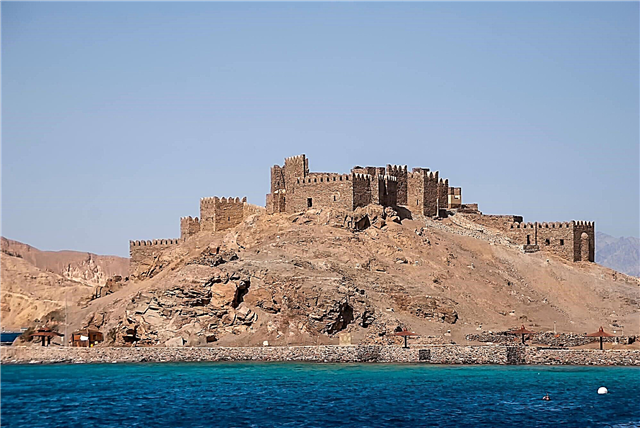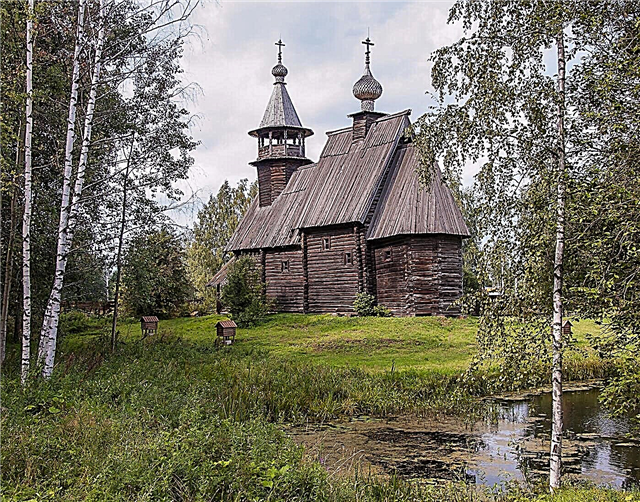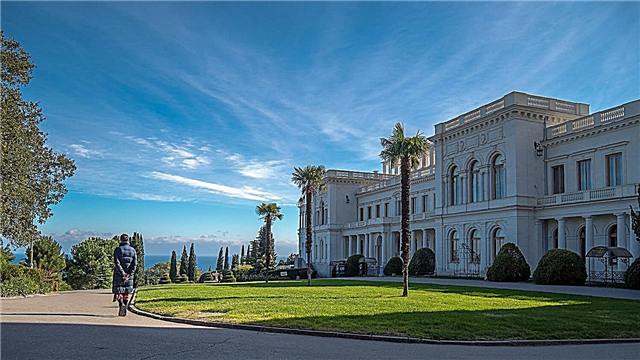Estonia is a country of small settlements. Each of them has a full-fledged urban status, and the number of inhabitants is like small villages. The capital Tallinn stands out from the crowd: more than 434 thousand people live here. The gap with the second city on the list is large: in Tartu, the population level stood at around 93 thousand. And in the smallest city on the list of Cindy, there are less than 4 thousand inhabitants.
Tourists go to Estonia for beautiful landscapes, like in Narva, to see ancient architecture, what can be done in Tallinn, or to resorts, for example, in Pärnu. The population is partially Russian-speaking, so the journey is somewhat simplified. Border cities allow you to visit two countries at one time with a properly issued visa.
The largest cities in Estonia
List of the largest cities in terms of population in the country.
Tallinn
The capital of Estonia stands on the shores of the Gulf of Finland. Helsinki is only 80 kilometers away. The Dome Cathedral, the churches of Niguliste and Oleviste, the Museum of the Occupation, the Town Hall are important city attractions. The medieval street layout has been preserved. Old Tallinn is included in the UNESCO World Heritage List. Kadriorg Park, founded in 1718, stretches on the outskirts of the Kesklinn district.
Population - 434,562 people (2019).

Tartu
The city blocks stretch along the coast of the Emajõgi River. There are 20 museums in Tartu on a permanent basis, including zoological, art and national. Architectural monuments for the most part belong to the territory of the Old Town: Jaan's Church, Town Hall, University building. Large sporting events are regularly held - ski marathon, autumn race, bicycle rallies.
Population - 93 865 people (2019).

Narva
Center of the historical region of Prinarovye. Located on the border with Russia. The medieval order castle is one of the symbols of Narva. He and the Ivangorod fortress form a unique complex: there is no longer a place on Earth where the enemy fortresses would once have stood so close to each other. Not far from the city there is a resort area with hospitals, dispensaries and an almost 8 km long sandy beach.
Population - 55 905 people (2020).

Parnu
The most famous resort in the country on the Baltic coast. Mud and hydropathic facilities coexist with villas, medieval buildings and buildings of the Soviet period. Pärnu has a wide range of activities for tourists: there is a yacht club, a bowling center has been built, private instructors give lessons on tennis courts, and equestrian sports are taught in the suburbs. Music festivals take place in the summer.
Population - 39 438 people (2019).

Kohtla-Järve
Founded in 1946, although ancient settlements existed here before. These areas are known for large deposits of oil shale. Its production is the backbone of the urban economy. The industrial sector is actively developing. The territory of the former Algorithm plant and part of the forest in the vicinity are given over to playgrounds for paintball. A winter sports center has been operating since 2003.
Population - 33 743 people (2019).

Viljandi
Occupies the northern coast of the lake of the same name. Dense spruce forests grow on the opposite side. In the second half of the century before last, excavations began in the vicinity. The antiquities found in their place became the basis for the collection of the city museum. Jaani Church and castle are the main attractions of Viljandi. A medieval festival is held here every year.
Population - 17 407 people (2019).

Maardu
It stands on the coast of Muuga Bay. There is a division into industrial and residential areas, so the ecological situation is favorable. Lake Maardu is planned to be a recreation area, part of the work has already been completed. The airport and port have made the city a transit point for many travelers. Although there are not many inhabitants, the number of nationalities living in the surrounding area is 43.
Population - 15,332 people (2019).

Rakvere
It is located in the central part of the country on the Kiyula River. During its existence, it has changed several names, including the German Wesenberg. Sightseeing: the Church of the Nativity of the Blessed Virgin Mary, a barn built in the 18th century, a museum of the urban estate. An excursion to the ruins of the castle is accompanied by an extensive entertainment program.
Population - 15 189 people (2019).

Kuressaare
Located on the island of Saaremaa. There is a sea harbor and an airport. In the 19th century, healing mud springs were discovered in the vicinity of Kuressaare. Since then, the city began to develop as a resort. Tourists are attracted by the Episcopal Castle, which is interesting not only as an architectural object, but also as a museum of local lore. The territories of two nature reserves begin near the city.
Population - 13 097 people (2019).

Sillamae
Location - the coast of the Gulf of Finland. The border with Russia is about 15 kilometers away. In the past, the city was closed due to military production. The port is mainly used for cargo transportation. One of the museums in Sillamäe acquaints guests with exhibits from the Soviet era. In the south, there is the Pyukhtitsa Monastery, a popular pilgrimage site.
Population - 12 719 people (2019).

Valga
Here lies the border with Latvia. For tourists, visiting Valga is an opportunity to visit two countries at once. The city has several iconic religious sites, including the Church of St. Catherine and the Roman Catholic Church of the Holy Spirit. A special gym has been built for extreme sports. There is also a military park dedicated to the events of the War of Independence.
Population - 12 182 people (2019).

Vyru
Border settlement, from where you can quickly get to both Russia and Latvia. The old buildings of the streets have been preserved here. A large number of parks and lakes have made the area picturesque. There are many sports fields on the beach of Lake Tamula, including tennis courts. Two city churches are dedicated to Empress Catherine II, the founder of Võru. Moreover, one is Orthodox, and the other is Lutheran.
Population - 11 859 people (2019).

Saue
A city in the north of Estonia. The current status was obtained in 1993. The way of life here is measured, more like a village. The main attraction is the 17th century manor. The remains of a baroque park have survived with her. The interiors are remarkable for the decoration with stucco moldings of different styles. In the vicinity of Saue there is a forest park, which is equally beautiful in summer and winter.
Population - 10 661 people (2017).

Jykhvi
The main town of Ida-Viru County. More than half of the inhabitants are Russians. The main religions are Orthodoxy and Lutheranism. A museum is located in the Church of St. Michael. The Temple of the Epiphany of the Lord is active. The Toila-Oru Park is located in the valley of the Pyhaõgi River. It is distinguished by the species diversity of deciduous plants. Since 2006, Jõhvi has hosted a ballet festival.
Population - 10 541 people (2019).

Keila
The city has been known since the 13th century. For some time it bore the German name Kegel. In the historic center of the city, there is a church 50 meters high, which makes it one of the largest in Estonia. The landmark is surrounded by six chapels and woodlands. The ruins of a medieval manor can be found in the southeast of Keila. A stone altar, used in antiquity, has been preserved in the park nearby.
Population - 9 910 people (2019).

Haapsalu
The translation of the name is "wasp grove". One of the oldest cities in Estonia. The Haapsalu inn and castle are from the Middle Ages and are the main architectural sites of the area. There are three mud baths in the vicinity of Haapsalu. The tourist season lasts all 12 months, although there are adjustments for leisure activities depending on the time of year.
Population - 9 675 people (2019).

Paide
Located in the central part of the country.Paide has an interesting geographical position: it is no more than 100 kilometers from all major settlements in Estonia. The castle from the times of the Livonian Order is the main attraction of the city. There is a lake nearby. The county hosts many fairs related to folk art and Christmas.
Population - 7 905 people (2019).

Türi
Stands on the Parvu River. City status received in 1926. It bears the "title" of the spring capital of Estonia for the abundance of cultural events during this period. In Türi, there is a preserved medieval church built in honor of St. Martin. It is decorated with stone carvings, although the interiors are slightly modified from the original. About a third of the city's territory is occupied by parks and green areas.
Population - 5,911 people (2012).

Elva
It occupies the coast of the river of the same name. Lakes Arbi and Verevi are located nearby. The Lutheran Church of the 1920s is the main architectural object of the city. For a long time, intellectuals from all over the country came to Elva on vacation. The area hosts an annual bike ride. The length of the track is 70 kilometers. The Tartu Ski Marathon - the most popular in the country - ends in Elva.
Population - 5 763 people (2012).

Polva
A small town in the east of Estonia, favored by fans of outdoor activities. They go kayaking on local rivers, go on long hikes and participate in orienteering games. The peasant museum, a raised bog with islets, the Väike-Taevaskoda steep cliff are the most interesting places in the area.
Population - 5 324 people (2019).

Tapa
The name is derived from the Estonian word meaning "to kill". This is due to the large number of battles that took place in the past in the surrounding areas. The settlement was granted the status of a city in 1926. Religious sites: Church of St. John the Baptist and Lutheran Temple. They practically did not suffer even during the Second World War.
Population - 5 316 people (2019).

Jõgeva
Located on the right bank of the Pedya. The decorative garden of Rudolf Tamm, decorated with sculptures, has been created over 40 years. There are other green areas harmoniously integrated into residential areas. The city recorded the temperature record of Estonia - -43.5 ° C. A pillar of cold was erected in his honor. The vicinity of Jõgeva is occupied by the Endla lake-bog system.
Population - 5 073 people (2019).

Rapla
Occupies land in the central part of the country. The territory is characterized by a dense river network. Local karst caves, swamps and lowlands are protected by the state. The district has a favorable ecological situation, which contributes to the development of the tourism industry. Hiking and horseback riding is a popular leisure activity among visitors. In winter, ski trails are laid.
Population - 5,069 people (2019).

Kivioli
Located in the north-east of Estonia. About half of the population is Russian. Kiviõli's status changed frequently. Waste heaps - artificial mounds of waste rocks that appeared during work at the oil shale chemical plant - are the main attractions of the city. One of them - Uus-Tukhamyagi - reaches 138 meters and is the highest man-made mountain in the Baltics.
Population - 4,964 people (2019).

Cindy
At this place, traces of an ancient settlement were found - the oldest in Estonia. The current city developed from a workers' settlement that was formed at the factory. The architectural beauties of Cindy include the station building, the town hall, the Russian Orthodox Church, and several manor houses in the classical style. There is a dam in the city, and the Lanksaare wetlands begin in the vicinity.
Population - 3 806 people (2019).





